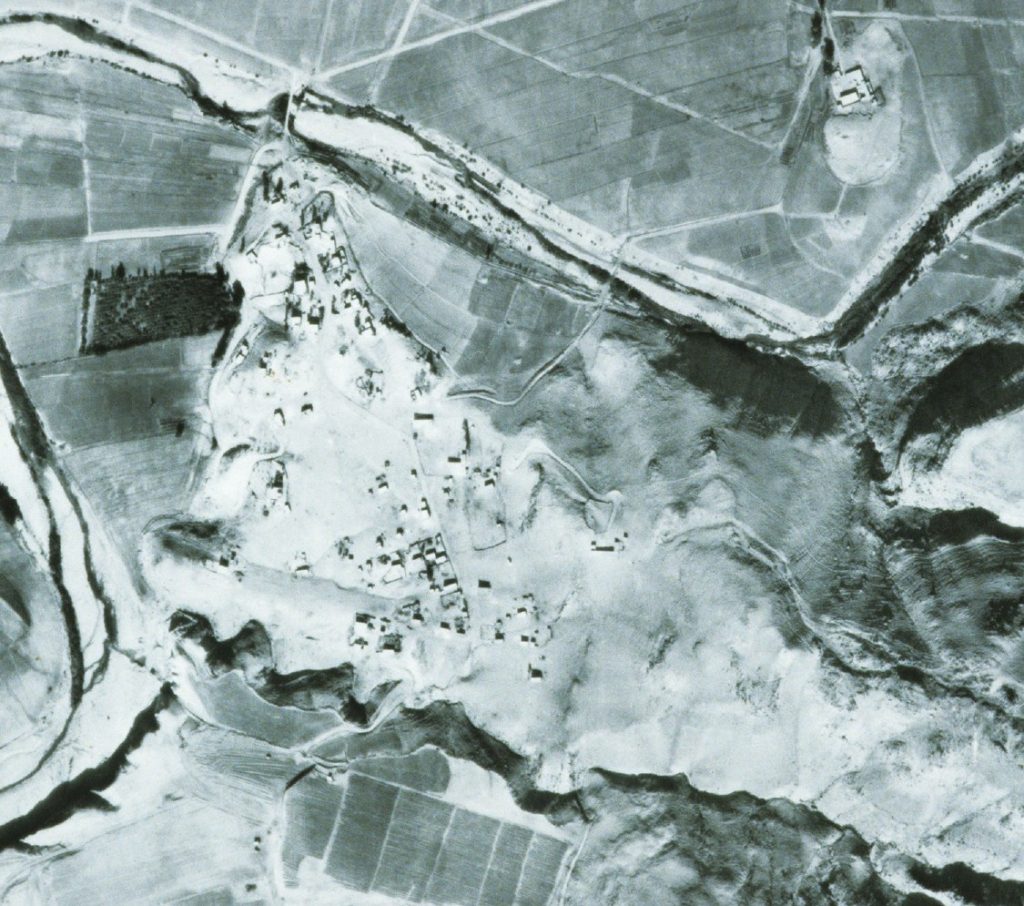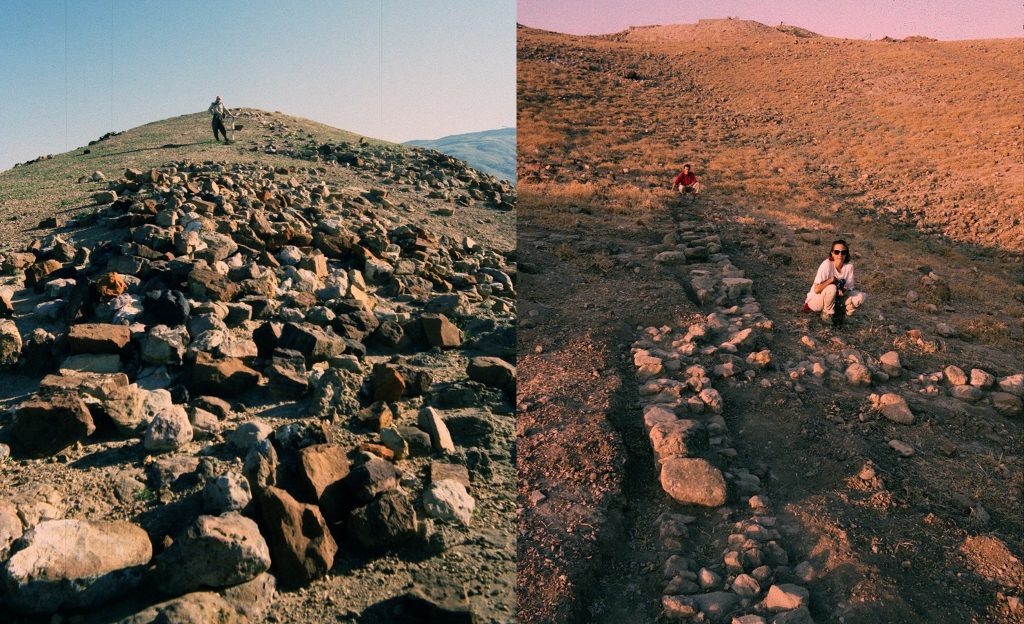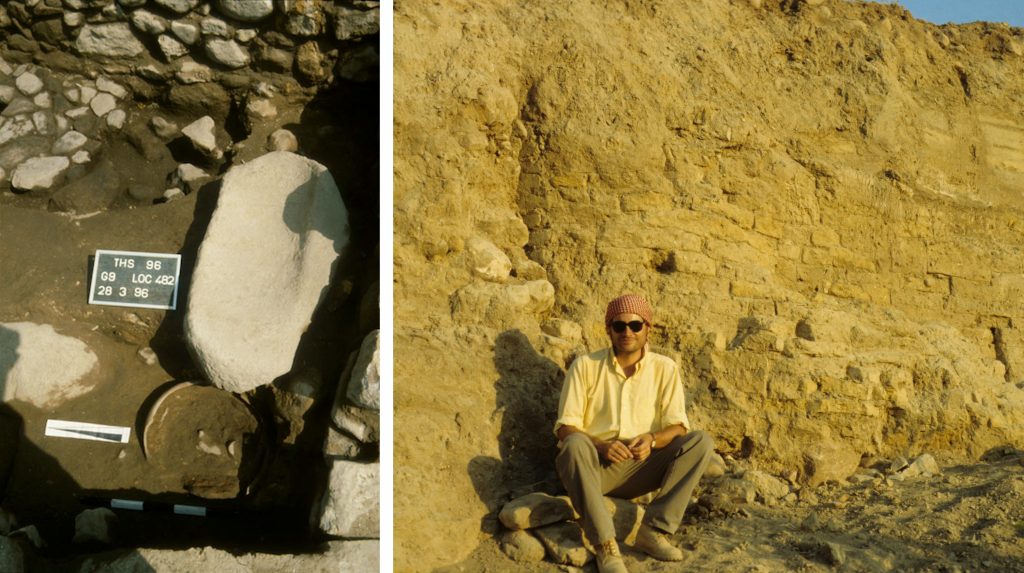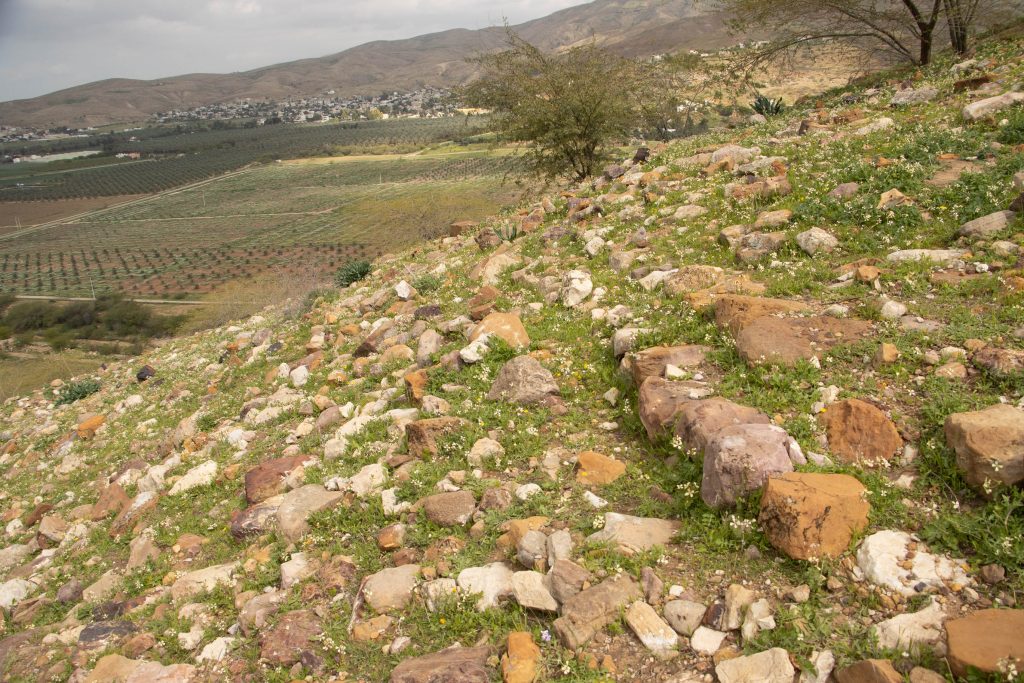
Satellite Image of Tall al-Handaquq South and Surrounding Area (Jordanian Royal Geographic Society).
The Tall al-Handaquq Archaeological Project (HAP) engages with key transformations brought on by the first cities in the southern Levant, by investigated how people fed, housed, and organized a rapidly growing community, through renewed work at Tall al-Handaquq South, Jordan. Tall al-Handaquq South is one of the largest known Early Bronze Age (c. 3300-2000 BCE) sites in Jordan, measuring at least 15 ha. It is a strategically located site, at the junction between the Highlands and the Jordan Valley, at the mouth of wadi Zarqa, near the modern town of Abu es-Zighan. Excavations directed by Dr. Meredith Chesson between 1993 and 1996, focused on residential structures to investigate the role of EB urban households in the political, social, and economic organization of early urban settlements. The data recovered by Chesson and her team contributes invaluable information about how people crafted a new, urban way of life within their houses and through their day-to-day activities, informing our understanding of how people during the created and maintained their communities during the Early Bronze Age.

Tall al-Handaquq South, 1993 & 1996 Seasons. Surface Architecture: Wall and Gate. (Photos By: Meredith Chesson (Left), Ian Kuijt (Right)).
Renewed field work beginning in 2025 investigates daily life and community organization in one of the largest early cities in the region through survey and excavations. Regional evidence and previous research at the site leave us with essential questions that we are uniquely situated address at Tall al-Handaquq South with our forthcoming research:
(1) How was Tall al-Handaquq South organized? What were the key administrative structures, how were public spaces and infrastructure planned, and how did people provision the large community with essential food and other resources?
(2) How did Tall al-Handaquq South develop? How did the community expand the settlement to fit their cosmopolitan needs? How did settlement organization change as people navigated city living for the first time?In addition to our survey and excavations, HAP is undertaking collaborative consolidation of our excavations in partnership with the Department of Antiquities in Jordan. The exact character of these consolidation projects will be determined by results from our 2025 survey and future excavations.

Excavations of domestic space (Left) and mudbrick fortifications (Right) in 1993 & 1996. (Photos By: Meredith Chesson).
Project Directors
Dr. Hanna Erftenbeck (Colgate University, University of Notre Dame) erftenbeck@nd.edu
Dr. Natalia M. Handziuk (University of Notre Dame) nhandziu@nd.edu
Select Publications
Chesson, M.S. 1997. ‘Urban Households in Early Bronze Age Communities of Syro-Palestine.’ PhD Dissertation, Boston, MA: Harvard University.
Chesson, M.S. 1998. ‘Preliminary Results of Excavations at Tell El-Handaquq South (1993–96)’. Palestine Exploration Quarterly 130 (1): 20–34. https://doi.org/10.1179/peq.1998.130.1.20.
Chesson, M.S. 2000. ‘Ceramics and Daily Life in the EBA Household: Form, Function and Action in Residential Compounds at Tell El-Handaquq South, Jordan’. In Ceramics and Change in the Early Bronze Age of the Southern Levant, edited by G. Philip and D. Baird, 365–78. Sheffield, England: Sheffield Academic Press.
Erftenbeck, H. 2023. ‘Food for Change: Daily Practices and the Development of a Shared Food Habitus during the Early Bronze Age in the Southern Levant’. Unpublished Thesis, Indiana: Notre Dame.
Price, M.D., C.A. Makarewicz, and M.S. Chesson. 2018. ‘Domestic Animal Production and Consumption at Tall Al-Handaquq South (Jordan) in the Early Bronze III’. Paléorient 44 (1): 75–91. https://doi.org/10.3406/paleo.2018.5786.

Walls visible on the surface at Tall al-Handaquoq South in March 2022. (Photo courtesy of Dr. Bob Miller https://bobmiller.com.au/copy-of-archaeology).